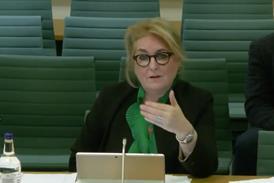James Driscoll takes a look at the pros and cons of commonhold compared to the more traditional leasehold system
Since 27 September 2004, commonhold can be used for new property developments whether they are commercial, residential, or mixed-use. Commonhold is also available for leasehold or freehold conversions (provided all owners unanimously agree). It is provided for in part I of the Commonhold and Leasehold Reform Act 2002 (CLRA), and in the Commonhold Regulations 2004.
Additional regulations are likely later this year, dealing with shared ownership leases, the Commonhold Ombudsman Service, insolvency, Islamic mortgages, and compulsory purchase.
Commonhold is now the alternative to leases for new developments. It confers freehold ownership for units within the commonhold. This is coupled with membership of a commonhold association, which owns and manages the common parts.
Each commonhold has a commonhold community statement, which specifies the properties within the development and the rules of that commonhold.
Both the constitution of the commonhold association and the basic form of the commonhold community statement have been prescribed by regulations. Only in limited ways can the form of the association be departed from. The basic form of the statement is also standard. The actual details of a particular commonhold are set out in the local rules of that commonhold. 'Voluntary clauses' (with a detailed commentary) have been published by the Department for Constitutional Affairs.
How are commonholds set up? Application is made to the Land Registry, which will register a freehold title if there is in existence a commonhold association, a commonhold community statement and other specified documents, such as the consent of the freeholder, any mortgagee and where relevant certain leaseholders (see section 1, schedule 1 to the CLRA). A distinction is drawn between new developments (where there are no owners of commonhold units to begin with) and conversions where there will be unit holders as soon as the registration takes place. The latter allow leaseholders of flats or cases of freehold flats to convert and in either case only if all concerned (freeholder, any lenders and all the leaseholders) agree.
A key factor for new developments is the way in which the developer can retain sufficient control to complete the works, and market and sell the units.
Under commonhold, this can be achieved in the following ways. First, in some cases, the developer may delay the application to the Land Registry, until the practical elements of the development proposals have been established. Following registration is a 'transitional period' that continues until the first unit has been sold.
During this period, the developer has complete control. For example, the numbers or location of the units or the common parts can be changed (though the amended commonhold community statement has to be re-registered with the Land Registry).
But once the transitional period is at an end, the picture changes as at this point the common parts automatically vest in the commonhold association and the rules in the statement come into play for the first time. Clearly, during the period of the first unit sales, the developer is in control, but this will wane as the sale process takes place.
This is why developers must ensure that the statement contains 'developer's rights', defined as the right to complete the works on the development and marketing activities.
In this way, a developer can reserve the right to add or remove land from the commonhold, change other provisions in the statement, and appoint and dismiss directors.
Under the Act and the regulations, the association must manage the commonhold and ensure that its rules are adhered to. It is likely that in practice professional managers will be appointed. Directors of the association, for example, do not have to be members.
The actual rules relating to unit use, usage of common areas, insurance and the share each unit holder bears of the commonhold assessment and any reserve of funds that have been established, will be found in the rules local to the commonhold concerned and will appear in the appendices to the statement.
When considering usage, there is an important distinction between residential and commercial units, as in the case of the former there are statutory limitations on the unit holders' rights to let. An owner of a residential commonhold unit may let, provided the tenancy complies with the regulations made under the Act.
A residential unit may be let provided that the term is for less than seven years (with no provision in the agreement allowing it to be renewed for a total term in excess of 21 years) and no premium is taken (see regulation 11). In other words, no problems at all for an investor or an owner-occupier who wants to let short-term on, say, an assured shorthold tenancy.
But this prevents an investor from buying a residential unit and then leasing the unit on a long lease - the long leasehold system, that commonhold is meant to replace in the future.
There are problems, though, for social landlords. They can let on assured or starter tenancies, but may not use, at present at least, the shared ownership lease as a method of delivering low-cost home ownership. But the latter can already be achieved by using a form of co-ownership under which the social landlord can share ownership with the tenant paying an occupation rent. Besides, the second set of commonhold regulations, which are expected later in 2005, will almost certainly make provision for shared ownership to be accommodated in the commonhold system.
There are no such statutory restrictions on leasing commercial units - here the only restrictions are any that have been included in the commonhold community statement.
By comparison to the leasehold system (the residential long-lease system in particular), setting the expenditure for a commonhold is relatively simple. The directors of the commonhold must set, at least once a year, their assessment of the monies that are required from each of the unit holders to manage the commonhold. Emergency assessments may also be made where necessary. Unit holders must be first consulted (except in the case of an emergency), but once the assessment is set, their proportions are recoverable with interest. There is no right to challenge charges in the leasehold valuation tribunal.
In principle, commonhold offers many advantages over the traditional leasehold system.
Once the requirements of the Council of Mortgage Lenders for lending on commonhold are available later this year, it will be surprising if commonhold does not become attractive, at least for smaller new developments.
And it is also possible that conversion to commonhold will be an attractive option for leaseholders of flats and for those who own freehold flats.
James Driscoll is a consultant solicitor in the housing projects section at City firm Trowers & Hamlins. He is co-author of Commonhold: Law and Practice, to be published in May by Law Society Publishing. The book can be ordered direct from Marston Book Services, tel: 01235 465 656
Charity Explorer provides a reputable reference tool for solicitors, will-writers and their clients who want to leave a legacy or charitable gift.
Visit Charity Explorer
Whether you are looking for legal expert witnesses, legal training/CPD providers, international law firms, administration of estates, legal software suppliers, barristers chambers or any other general legal service, the Legal Services Directory will provide a suitable option.
Visit Legal Services Directory























No comments yet